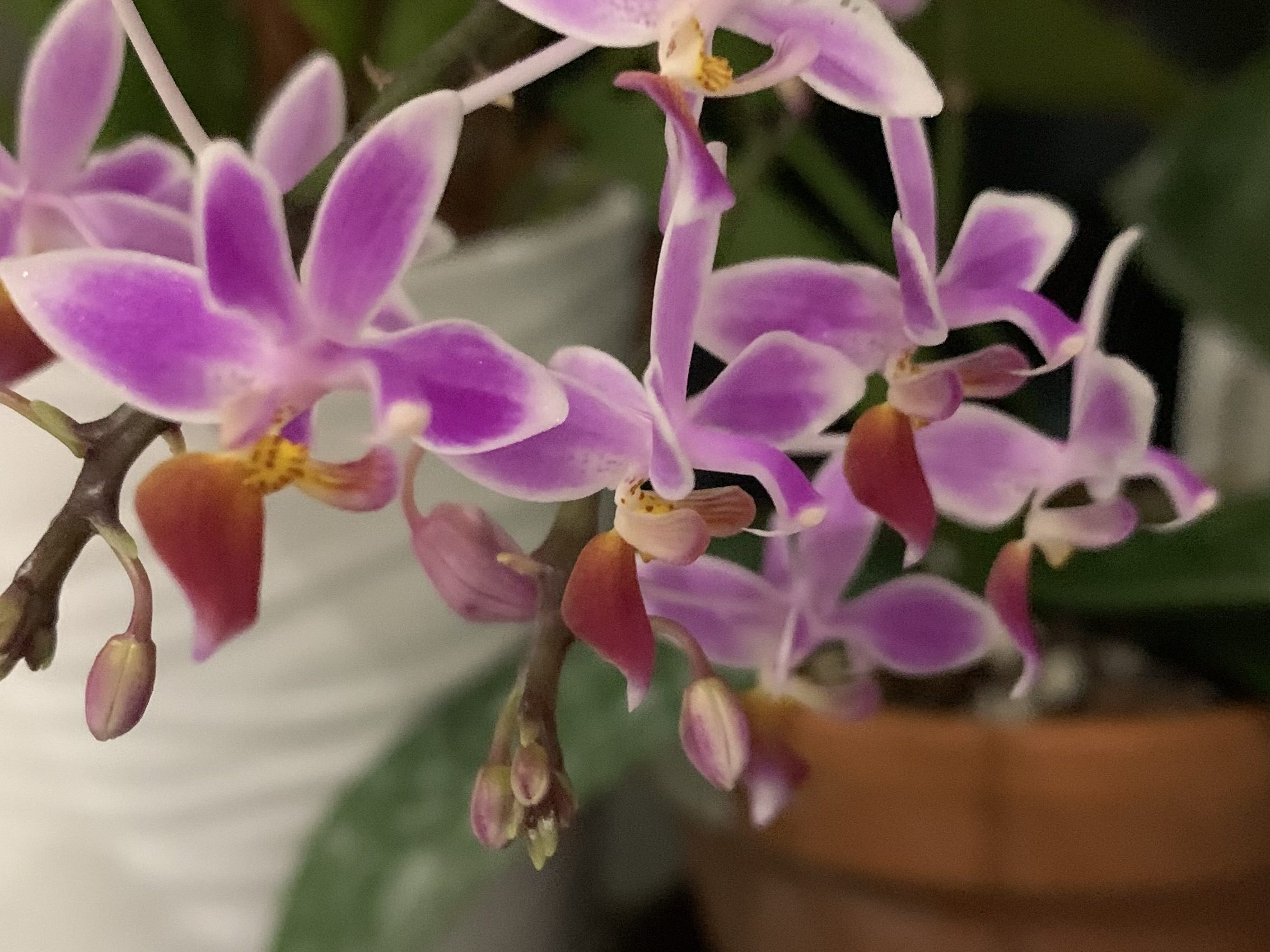Sheffield & District Orchid Society

Phalaenopsis (moth orchids) are found mostly in Asia, from India to the Philippines, and to the north of Australia. They are monopodial epiphytes (growing on trees), with thick, leathery leaves and showy flowers produced on long inflorescences. Their ease of care makes them the ideal orchid for growing on a bright, shaded windowsill in your home.
Light: Phalaenopsis like to be grown in bright shade conditions, but their leaves will burn quickly if exposed to strong sunlight. Generally a bright north windowsill, or an east or west windowsill, with a short amount of either early morning or late afternoon sun will be the ideal spot for growing your moth orchid.
Temperature: Most Phalaenopsis species and hybrids are warm growers,and need temperatures between 22 – 28°C during the day, with a nightly drop in temperature to around 15–18°C, although they can tolerate temperatures outside this range for short periods of time without any problems. In winter, when growth rate slows down, a drop in temperature difference of about 5°C between day and night will encourage your plants to initiate flowering. However, if you grow them on a windowsill make sure they do not get cold or a draft during the night, particularly in winter when curtains may be drawn. If you are unsure grow them near the window, but not up close to the glass, for example on a table.
Water and humidity: Phalaenopsis do not have pseudobulbs to store nutrients; neither do they have a rest period. This means that they need to be watered consistently all year round. Water your plants thoroughly once a week during spring and summer, and reduce this to once every 10 to 14 days between autumn and winter. When you water, pour water into the top of the pot, let it run through into a bowl and repeat three times to wet the media. Then let the pot drain before you replace it back into a ceramic pot or on to a table. Learn to judge when your plant needs watering by getting to know the feel of the weight of the pot when its wet and dry. Water quality in Sheffield is OK for orchids, but if you do use tapwater, fill a bottle and let it warm to room temperature before you water your orchid, cold water straight from the tap will shock your orchid and will cause damage, particularly in winter. If you live in an area of hard water, use rain water from a water butt. Never use water that has been softened, this will kill your plant over a period of several months.
Ensure good humidity around your plants by standing them on a tray with pebbles filled with water, or by having foliage plants around them. Never allow water to sit in the crown of your plants, and do not let the roots sit in water. A dilute (approximately 1/4 of the recommended dose), balanced fertiliser applied every other watering is recommended for strong growth and flowering.
Potting: Phalaenopsis can be repotted at any time of the year, although it is best done in early spring. Use a mixture of coarse bark with charcoal and perlite, although some species are better grown in pure Sphagnum moss. Do not overpot, and replace your potting medium every two or three years if using a bark-based medium, or every year if using Sphagnum moss.
If you have just bought a phalnopsis from a shop, once its finished flowering you should repot it. Many nurseries grow their plants with moss plugs and these are not good for the plant. You need a free draining media like bark to allow the roots to breath.